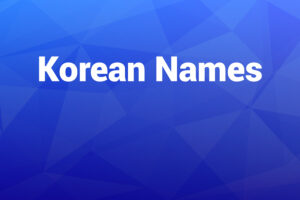Choosing the right color name influences how your message is received and how your brand is remembered. You work with design, branding or home décor and you need to speak clearly about color.
In this article you will learn why specific names matter, how to use them effectively, how to select names that resonate, and common pitfalls to avoid.
Why Color Naming Matters
When you pick a color name you convey more than just a shade. You convey emotion. You signal quality. You create an identity. For instance, “Mint Green” feels fresh and modern while “Forest Green” feels grounded and natural.
Using generic or unclear names weakens impact. Unique names give your brand or project distinction. Professionals with decades of experience understand this nuance. Color names anchor how audiences perceive tone, context and style. They support consistency across media, packaging, websites and more.
The Basics of Color Naming
Good color names follow a few key principles.
- Use familiar language. The name should be understandable to your audience.
- Match the feeling. If the color is warm and inviting, the name should reflect that.
- Keep it short. A clear, concise name is memorable.
- Avoid confusion. Similar names lead to mix‑ups.
- Maintain brand alignment. Your names should reflect your brand voice, whether formal, playful or luxury.
In the U.S. market, you’ll want names that feel natural to your audience while fitting the tone of your brand.
Common Categories of Color Names
Let’s look at typical categories you’ll encounter and use.
Neutrals
These include names like “Ivory,” “Taupe,” “Charcoal,” and “Slate.” These names ground a palette and provide versatile backdrops.
Primaries and Secondaries
Basic names like “Red,” “Blue,” “Yellow” still dominate for clarity. More advanced names include “Cerulean,” “Crimson,” “Lime Green.”
Shades and Tints
These are variations such as “Light Coral,” “Deep Navy,” “Pale Aqua.” They help refine the emotional tone.
Descriptive or Metaphorical Names
When you elevate a name by using imagery or metaphor, you get things like “Sunset Orange,” “Mist Grey,” “Ocean Teal.” These names evoke a vivid feeling.
How to Create Color Names That Resonate
When you generate your own list of names, follow this process:
- Look at the shade and ask: what does this color feel like?
- Think of a simple noun or concept that matches the feeling (ex: ocean, flame, slate).
- Combine that noun with a descriptive word (ex: “Soft Ocean,” “Burnt Flame”).
- Test the name out loud and in writing. Does it roll off the tongue? Does it convey the right mood?
- Check for uniqueness in your category or industry. Avoid names that appear everywhere.
- Translate across uses. Will the name still work on labels, websites, mobile apps, printed materials?
Practical Tips for Naming in Digital and Print
- Make sure the name aligns with the HEX or RGB value you’re using. Consistency prevents brand drift.
- In digital design, use names that reflect web‑safe or standard color names when possible (e.g., the 140 HTML color names supported by browsers).
- For print, consider how color names translate when printed versus displayed on screen. What looks vivid on screen may print differently.
- Create a naming hierarchy if needed. For example: Base Name (Blue) → Variation Name (Sky Blue) → Descriptor (Muted Sky Blue).
- Avoid over‑complicating names with jargon. If it takes too long to say or write, your audience may misremember or skip it.
Why Some Common Mistakes Hurt Your Effort
Even seasoned professionals slip into pitfalls. Avoid these:
- Over‑generic names like “Light Blue 2” or “Shade A.” They lack character.
- Using too many adjectives: “Ultra‑Deep Smoky Midnight Navy” is hard to recall.
- Ignoring cultural or regional meanings. A color name that seems positive in one region may mean something different elsewhere.
- Allowing name overlaps within your own catalog: two similar names cause confusion among users.
- Forgetting to update names when color standards change. Design libraries evolve, so naming should too.
Examples That Work Well
Here are a few names that hit the mark:
- “Cerise” (a cherry‑toned reddish pink) feels punchy and stylish.
- “Marigold” (a yellow‑orange) evokes warmth, energy and familiarity.
- “Camel” (a pale brown) drives a premium, understated vibe.
- “Fuchsia” (a vivid pink‑purple) stands out, bold and memorable.
These names tie into broader language and imagery so your audience instantly understands the mood.
How to Build a Color‑Name Library for Your Brand
Step‑by‑step:
- Audit your palette. List every color you currently use.
- Group by role: Primary, Secondary, Accent, Neutral.
- For each color assign a clear name following the principles above.
- Document HEX/RGB values next to each name.
- Create usage guidelines: When to use which color and how to call it by name in copy, labels, digital assets.
- Review annually. Trends shift, audience expectations evolve, and you want your names to stay fresh.
Color Naming Trends You’ll See in 2025
Design language is evolving. Some trends worth noting:
- Minimalist names: One‑word names like “Mist,” “Drift,” “Ink” are gaining traction.
- Natural inspiration: Names based on natural elements or phenomena (like “Coral Reef” or “Rainforest”) continue to dominate.
- Inclusive and accessible naming: Brands focus on names that feel inclusive regardless of audience.
- Digital‑first naming: With mobile apps and digital experiences growing, names must work well in short form and small displays.
How Name Choice Affects SEO and E‑Commerce
If you’re selling products online and you list a color name, your choice affects search traffic.
- Use names people actually search for, not just your internal code names.
- Avoid overly niche synonyms unless you’re targeting a niche audience.
- Keep the name simple to type and easy to pronounce. That helps voice search and mobile entry.
- When you optimize product listings, your color name becomes a keyword plus inventory descriptor. A good name boosts both clicks and conversions.
FAQ’s
Q: How many color names should I have ready for a full brand palette?
You should aim for at least 10‑12 names in your primary palette (including neutrals), plus 5‑6 accent colors.
Q: Are there standard color names I must use for web design?
Yes. Modern browsers support around 140 named colors by default that you can use in CSS.
Q: Should I trademark my color names?
If managing a brand with a unique naming system, yes consider protecting signature names legally to avoid confusion.
Q: Can I use fun or whimsical color names for serious business contexts?
Yes but with caution. The tone should align with your audience. In professional sectors a whimsical name may undermine credibility.
Q: How often should I update my color names?
Review annually or when you refresh your brand visuals. Update names only when values or usage change significantly.
Q: What is the difference between a “shade” name and a “tint” name?
A “shade” is a darker version of a base color, often using descriptive words like “Deep,” “Dark.” A “tint” is a lighter version, using words like “Light,” “Soft,” “Pale.”
Q: Is it helpful to include HEX or RGB codes when naming colors?
Yes. For design teams and digital assets include the codes next to the names. That guarantees consistency across platforms.
Conclusion
You now know how color naming influences perception, guides brand mood and affects usability in design and e‑commerce. Over three decades writing about creative communication taught me that the right name is as important as the right shade.
Make your names intentional, simple and aligned with your purpose. Build your library, stick to your naming rules, and update as your brand grows. Your audience will appreciate clarity, and your visuals will feel stronger and more professional.










